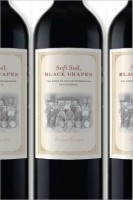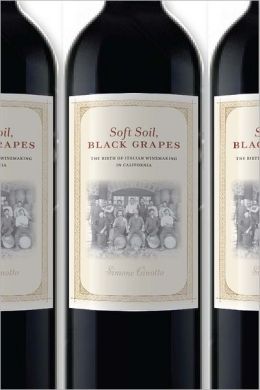 Author: Simone Cinotto
Author: Simone Cinotto
Publisher: New York University Press – 267 pages
Book Review by: Sonu Chandiram
In relating to us the story of winemaking ventures by Italian immigrants in California, Simone Cinotto points out that one of the key ingredients to their astounding success was their close family ties, and not as much their financial means or their experience in growing and creating wine.
California’s wine production from more than 1,200 vineyards, accounts for 90 percent of all American wine, even though all U.S. states produce it. California’s land area is about three quarters the size of France. Over its 427,000 acres are planted with vineyards stretching more than 700 miles from Mendocino County in the north to Riverside County in the state’s southwestern tip.
The United States has been producing wine for more than 300 years and today it ranks fourth in the amount produced worldwide, after France, Italy and Spain.
Italian grape growers and vintners began coming to the Golden State in the 1880s and joined the already established French, Spanish, German and Scandinavian ventures.
The close relationships however of Italian entrepreneurs, enabled them to start their own wineries. Termed “social capital’ by the author, this relationship “glue” if we may call it, was instrumental in helping the Italians establish a nationwide network of financial supporters as well as a large Italian-American consumer base.
With these two important resources, the Italians were able to greatly expand their production volumes and bring price points of wine to affordable levels so that the masses began to enjoy wine, which was previously consumed only by people in higher income brackets. Such a story unfolds in this book, as we relate briefly here.
This book focuses on three Italian-owned wineries started by first- and second-generation Italian immigrants who transformed California winemaking into a mass-market operation and helped make wine a beverage consumed nationally in large quantities. These three companies were:
- Italian Swiss Colony
- Italian Vineyard Company
- Ernest & Julio Gallo Winery
The author points out that even before middle-class American consumers had developed a taste for quality wine and California wines started to compete with the world’s “most prestigious” wines, these three companies, in anticipation of higher demand from all over the United States, had already put in place nationwide marketing and distribution systems.
For example, in about 20 years of operation from its start in 1881 by Pietro Carlo Rossi (1855-1911), the Italian Swiss Colony winery in Sonoma County was, by 1900, producing more than two million gallons of wine from 14 thousand tons of grapes.
The production of the Italian Vineyard Company, founded in 1900 by Secondo Guasti (1859-1927) was even larger. In 1910, ten years from its inception, Guasti’s winery claimed the largest vineyards in the world, with over 5,000 acres, harvesting more than 20,000 tons of grapes each fall, and having warehouses able to store more than 3.5 million gallons of wine.
The history of the Italians in winemaking and selling gets more interesting…
After the repeal of the Prohibition Act in 1933, Ernest (1909-2007) and Julio Gallo (1910-1993) had bigger dreams than Rossi and Guasti. With meager capital and no winemaking experience, the two brothers nevertheless established a winery in Modesto County in the Central Valley in California.
Their ambitions were very large, and their success was immense: by 1985, their company was selling some 140 million gallons of wine, and owned more than a quarter of the entire U.S. wine market.
Cinotto writes about them: “The Gallos arguably contributed more to the creation of a mass wine market in postwar America than anyone else by selling branded, standardized, and inexpensive wines to consumer segments that had never been reached before, well beyond the largely ethnic (Italian) market dominated by the Italian Swiss Colony and the Italian Vineyard Company.”
This is an engrossing, enthralling and inspiring book on the story of winemaking by Italians in California, and Simone Cinotto tells it very well.
Simone Cinotto is Assistant Professor of Twentieth-Century History at the University of Gastronomic Sciences in Pollenzo, Italy. He was previously Tiro a Segno Visiting Professor of Italian American Studies at NYU. He is the author of Una famiglia che mangia insiene: Cibo et etnicita nella comunita italo-americana di New York, 1920-1940 (A Family That Eats Together: Food and Ethnicity in the Italian-American Community of New York, 1920-1940) (2001) which is now available in a New English edition.







